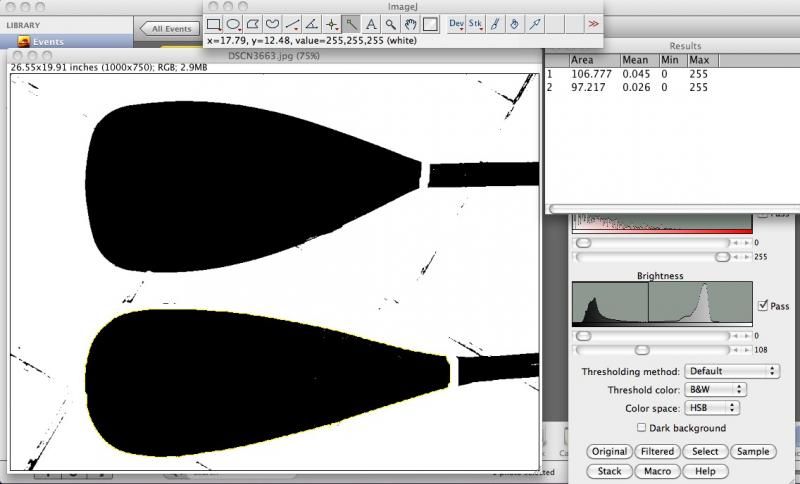Anyway, as I was geeking out reading about SUP gear and techniques online, I came across some guidelines for what size paddle blade you should use. It makes sense that there would be an optimal size for paddle blades, since a very small blade wouldn't catch enough water to push you forward effectively, while a very large blade would make your strokes awkward, slow, and tiring. Body weight seems to be the main determinant of optimal blade size. Since I weigh around 175 pounds / 80 kg I ought to use a paddle blade with an area between 90 and 100 inches squared.
Its a little more complicated than that, though. Apparently there are at least two other things that affect optimal paddle size: your strength to weight ratio and the length of the race you'll be paddling in. If you're super strong for your weight, like a wrestler or a gymnast, then you can benefit from maybe a 10% or so bigger paddle blade than someone your weight would normally use. If you're doing a short "sprint" race then you might also benefit from a bigger blade. On the other hand, a smaller than normal blade could help in a long-distance race by preventing muscle fatigue. I think I can ignore the race length factor, since the race I do is medium length. Regarding strength to weight ratio, I have no idea how that might be calculated, but I can do about 15 pullups so I'll go out on a limb and say I'm above average in that department. So 100 inches squared would probably be better than 90 inches squared for me.
The only thing is, I bought my paddles a long time ago and I had no idea how big the blades were and whether they were the right size for me or not. Since they're odd shapes with rounded edges it would be hard to figure out their area by normal math and measurement. Fortunately, I'm a scientist, and I realized that I could use the same image analysis software that I use to quantify seagrass blade areas to quantify my paddle blade areas. The software is "ImageJ," a free program that you can download from the US National Institute of Health. I think it was originally developed to help medical doctors measure the size of suspicious moles, etc. It takes a little fiddling to figure out all the features of ImageJ, but the basic method I used to measure my paddle blade areas is this:
1. Put the paddles on a flat surface with an even color that contrasts sharply with the color of the paddles.
2. Lay a ruler or other object of known size next to the paddles.
3. Hold a camera steady and level above the paddles and take a picture.
4. Shrink the file size a bit so ImageJ can manage the picture.
5. Open the picture in ImageJ.
6. Use the line tool to trace 0 - 12 inches on the ruler, and use "Analyze, Set Scale" to set that scale at 12 inches.
7. Use the "Adjust, Color Threshold" menu to turn the image to black and white, and twiddle the levels so that the paddles show up as a simple block color on a blank background.
8. Use the paintbrush tool to cut off the heads of the paddles where they meet the shaft, and fix any gaps or spillovers in the paddle shapes.
9. Use the magic wand tool to select a paddle head, and then use "Analyze, Measure" to get its area, which will be in inches squared.
Original image-

Processing image in ImageJ-

I found that my Angulo carbon fiber paddle head is 97.2 inches squared, and that my cheap aluminum and plastic paddle head is 106.8 inches squared. It will be hard to make a fair comparison of the two paddles since the aluminum one is about twice as heavy, but I'll give the big one a try on the race course to see if it seems like the extra size is in any way helpful.

2 comments:
I have been trying to work out my blade size, came to me last night. string around the edge of the blade, measure the length and use that as the circumference of a circle and calculate the area.
Old school but works!
Thanks for the tip. I have downloaded the application and tested with your picture and I get very similar measures.
Post a Comment